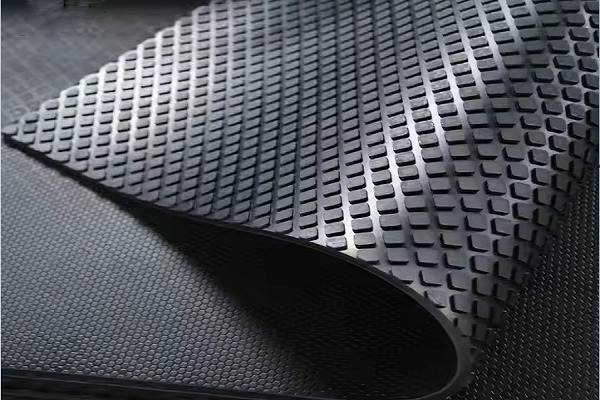
In livestock farming,the laying of livestock mat is a crucial task that directly affects the living environment,health,and production efficiency of the animals.However,many livestock farmers are not fully aware of the correct methods for laying livestock mat.Here,we will provide a detailed explanation of the laying techniques for livestock mat to help improve the quality of livestock farming.
Livestock mat,also known as animal mattresses or mat materials,is laid inside the livestock shed for animals to lie on,rest,and defecate.There are various types of livestock mat,including natural materials such as wood chips,straw,wheat straw,and corn cobs,as well as synthetic materials like rubber mats and plastic mats.Each material has its unique advantages and disadvantages,and farmers need to consider their actual needs when choosing.For example,wood chips have good moisture absorption and insulation properties but are prone to bacterial growth;while rubber mats are durable and easy to clean but have a higher cost.
Before laying the livestock mat,it is essential to prepare the livestock shed properly.
Ensure that the floor of the shed is flat,dry,and free of sharp objects to prevent damage to the mat or injury to the animals’skin.At the same time,thoroughly disinfect the shed to kill potential bacteria and parasites,providing a healthy living environment for the animals.

>send emails to sales@jingdongrubber.com,get a quote of livestock mat now
Next,comes the process of laying the livestock mat.
First,cut the livestock mat to the appropriate size based on the size and shape of the shed.
Then,lay the mat evenly on the floor,making sure there are no wrinkles or gaps.If using multiple pieces of mat that need to be joined,ensure that the joints are tight and seamless to prevent the animals from tripping or getting injured.
During the laying process,pay special attention to the thickness and density of the mat.
Generally,the thickness of the mat should be determined based on the weight of the animals and the farming requirements.Mat that is too thin may not provide sufficient support,affecting the comfort of the animals;while mat that is too thick may lead to poor air circulation and increase the risk of bacterial growth.At the same time,the density of the mat should also be moderate,ensuring good ventilation while effectively absorbing excrement and moisture.
After laying the livestock mat,regular maintenance and management are necessary.
Regularly check the wear and tear and cleanliness of the mat,and replace any damaged or dirty mat in a timely manner.Also,maintain good ventilation in the shed to avoid a damp and stuffy environment that promotes bacterial growth.Additionally,regularly disinfect the shed to ensure the health and safety of the animals.
In addition to the basic laying techniques mentioned above,there are some details to pay attention to.
For example,when laying natural material mat,remove any impurities and hard objects to prevent injury to the animals.For synthetic material mat,choose products that meet environmental standards to avoid pollution.
Laying livestock mat is a meticulous and important task.By mastering the correct laying techniques and methods,we can provide a comfortable,healthy,and safe living environment for the animals,thereby improving the efficiency and quality of livestock farming.
Jingdong Rubber Co., Ltd. is a professional rubber sheet manufacturer, producing silicone rubber sheet, natural rubber sheet, fluorine rubber sheet, neoprene rubber sheet, insulating rubber sheet,EPDM rubber sheets, oil-resistant rubber sheets, anti-static rubber sheets, flame-retardant rubber sheets, conductive rubber sheets, anti-slip rubber sheets, and cowshed mats, etc. with 40 years of industry experience, are popular both at home and abroad. If you need any of our products,please send emails to sales@jingdongrubber.com.

